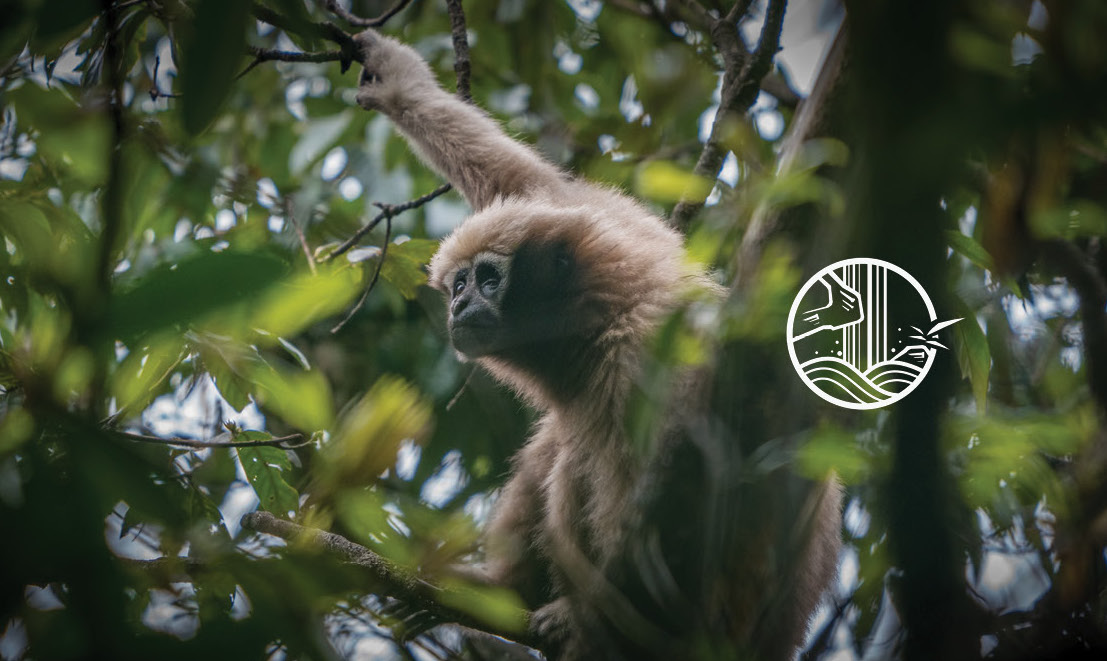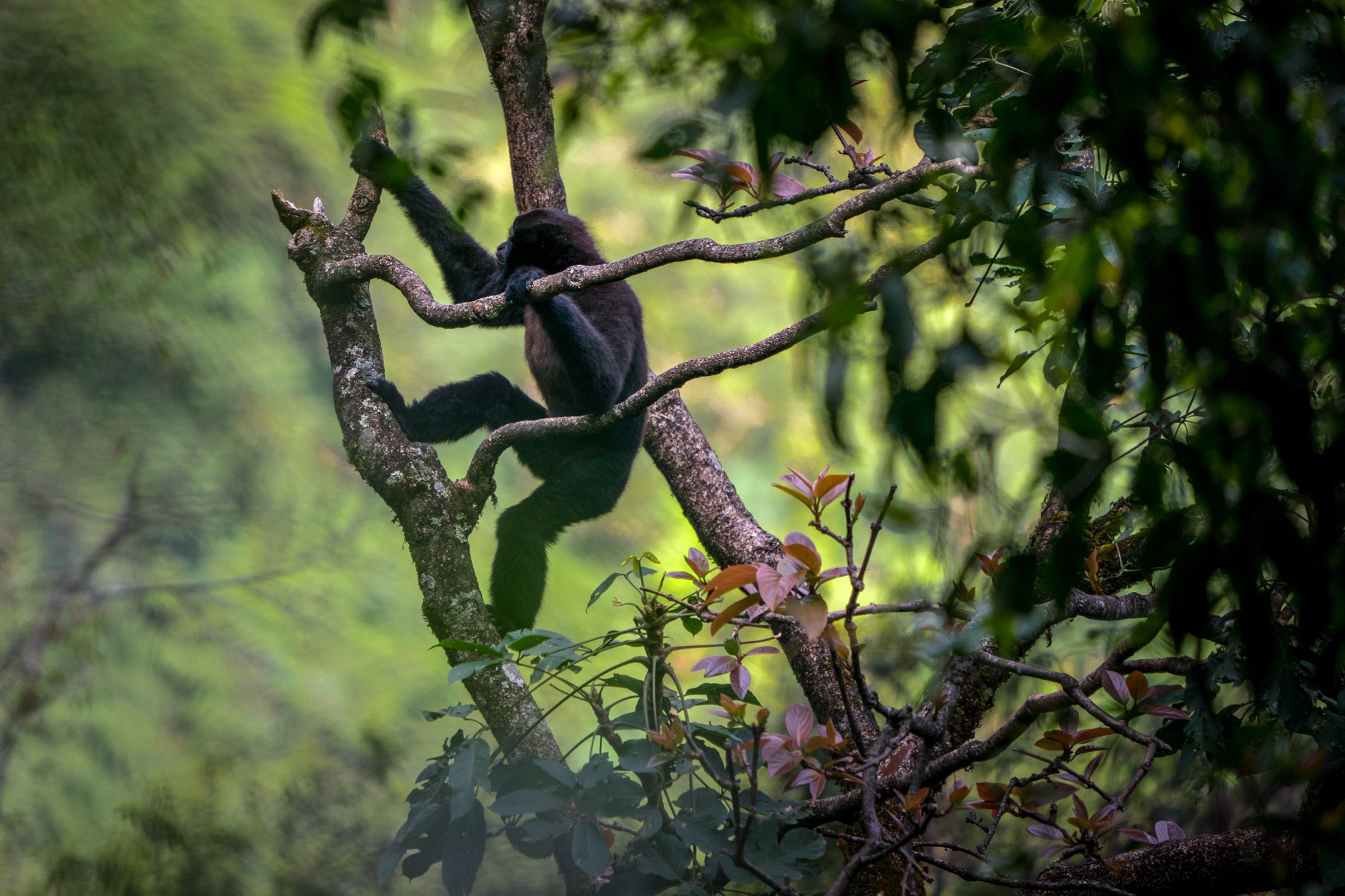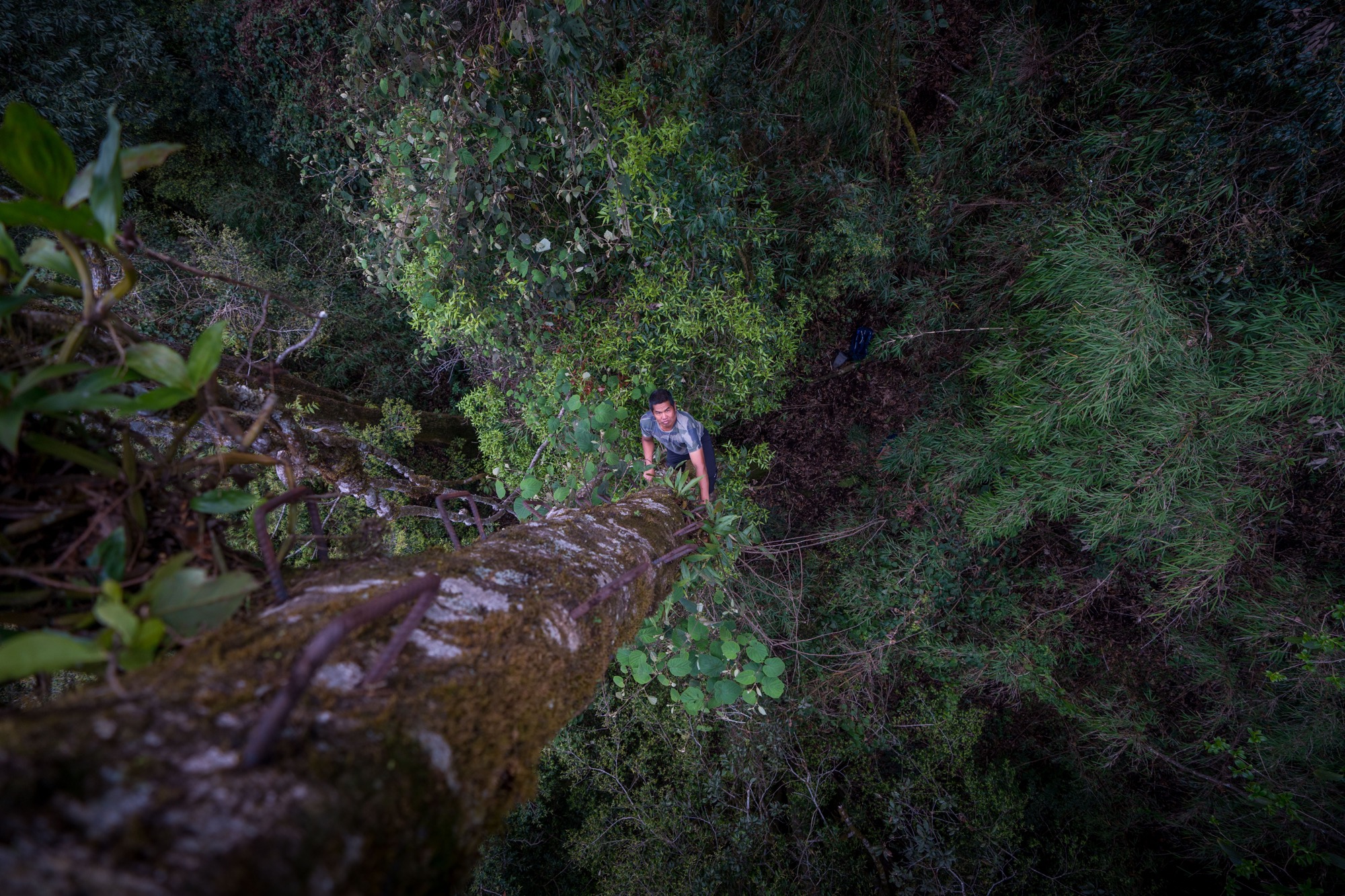Song of the Skywalker: The endangered gibbons of Yunnan

Conservation China is a five-part series in which environmental photographer Kyle Obermann brings us through glaciers, remote forests, and dusty villages to the gritty and stunning frontlines of Chinese conservation efforts. This is part 2. (Part 1 here.)
All photos by Kyle Obermann.

4:20 AM.
A Didi to T2, CA1445. Taxi to the Dali bus station, 40 kuai extra for an immediately departing van. Arrive at the wrong Baoshan bus terminal, bargain for a taxi to the other. Board a bus barely larger than the van, bumping for hours along the Mekong. Register with the police. Stumble off at Gangdang village. Careen up dirt switchbacks. My drone smashed, sticky mud, a deserted village, an hour’s hike. Arrive at an assemblage of thatched wooden shacks in a mountain forest, dinner, and then bed.
The Banchang Conservation Station, nestled high up in the heart of Yunnan’s Gaoligong Mountains National Nature Reserve, is not easy to get to, but making it means witnessing China’s greatest biodiversity — and the county’s most newly discovered and threatened primate.
The next morning, I found myself following the methodical whooshing sound of Uncle Cai’s machete cleaving through the undergrowth. Periodically, a loud thump would ring out followed by a hearty crack — the blade cutting through thicker resistance like a small sapling or vine. Above our clamor, sunlight trickled down the canopy, pooling into the highest corners of the glade. Uncle Cai lowered his machete and raised the megaphone in his left hand. Song erupted through the valley.
For years, playing pre-recorded gibbon song has been the most reliable method of locating elusive gibbon groups for the sake of conservation and research. Gibbons spend almost every second of their lives in the highest branches of the canopy, and usually only sing for a short period every morning. If they don’t, human researchers try to elicit a response by playing pre-recorded gibbon calls, then sprint cross-country to find them. The gibbon call is ethereal but coarse, shrill but melodic.
But in these mountains their call is becoming harder and harder to find. There are less than 150 Skywalker hoolock gibbons left in China, dispersed between the Gaoligong and the Myanmar border. Of the other five gibbons species native to China, two are already functionally extinct inside the border, and others, like the Hainan black-crested gibbon, only have 27 left.
Almost all face similar threats: illegal poaching, trade for traditional Chinese medicine, and deforestation. This is followed by habitat and population fragmentation, reduced gene flow, and the eventual decline of the species. The Skywalker faces a particular challenge: only discovered in 2017, incredibly little is known about their true distribution, habitat, and status, earning them a non-coveted place on the International Union for Conservation of Nature’s (IUCN) “Primates in Peril: The World’s 25 Most Endangered Primates 2018-2020” list.
Uncle Cai is one of the few local forest rangers working in the Gaoligong Mountains National Nature Reserve to stop poaching and protect the gibbons with Cold Mountain Conservation, China’s only local gibbon conservation NGO. When he started 22 years ago, he worked for 50 RMB ($7) per month. Now, he makes over 2,000 RMB ($283) and spends most his time living with only one radio and a few other rangers isolated up in Banchang station 2,o00 meters above the banks of the lazy Mekong.
But efforts of the rangers may go in vain if new conservation strategies are not introduced. Cardamom, a plant whose seeds are a common ingredient in Chinese hotpot, is a main source of income for many locals living near protected and non-protected Skywalker habitat. Trees that act as both food sources and travel routes for gibbons are often removed to grow it. While the locals earn a livelihood, the gibbons lose connection with swaths of habitat and other gene pools. Yunnan coffee, which has been grown in Yunnan since foreign missionaries introduced it in the early 1900s, also drives a similar, if not even more devastating, process.
Some conservation workers in China believe one of the best ways to help the Skywalkers rebound from the edge of collapse is through translocation, the process of moving isolated groups or individual species to areas that reconnect them with populated fragments. But, being a Class I Protected Species in China — China’s highest conservation status — collecting or moving the gibbons would require special and difficult-to-obtain government approval for the project. However, the action is not without precedent. In a 2016-2020 joint conservation plan for the Hainan gibbon, drawn up by China’s Bawangling National Nature Reserve, the IUCN, and other actors, translocation is listed as a possible emergency response plan to counter any further threats to the already dwindling population.
A few days later, after tracking an elderly, no longer fertile couple of Skywalker gibbons from dawn to dusk, Uncle Cai and I rested on an open outcrop facing the deep forested valleys below, watching rainclouds build to the west. As I counted my scrapes and bruises from that day’s trudge through the undergrowth while the gibbons had soared overhead above us, I asked him why after all these years he still persisted in this difficult work.
“When I go home, I still miss these mountains. It’s like my body below is asleep, but my heart is still up here.”
As night fell and a cool breeze kicked up in the valley, I couldn’t help feeling he was right. I wasn’t looking forward to the journey home in a few days’ time, and I knew I would miss these mountains. Most of all, I hoped — perhaps against all odds — that when I returned next time there would be more songs than before.



Conservation China is a five-part series. Previously:






